With a pressure canner, there’s a whole smorgasbord of foods that you can preserve safely. Not everything, however, retains it’s ‘safe to eat’ status as a home-canned preserve. Luckily for preppers, the list of what is safe to can far outweighs the list of what isn’t. Also, foods that can’t be canned can usually be preserved in other ways, so there are always options for storing your homegrown harvest or even shop-bought haul.
Although you can ‘can’ many foods safely using a boiling water-bath method, some bacteria can survive at normal boiling-water temperatures but not at the 240-degree heat that a home pressure canner can reach.
The key to what’s safe to can in a water bath and what isn’t is largely related to its acidity, and where a foodstuff falls on the pH scale. Low acid foods with a pH of 4.6 or above are usually only suitable for processing in a canner, whereas foods with a lower pH are considered to be suitably acidic for water bath canning.
So What’s In and What’s Out?
 But there are some foods that can’t be safely home-canned at all. Herbs or garlic in oil might be a common sight in the store, particularly at Christmas, but cannot be safely replicated at home. Another seasonal favorite that’s best left to the commercial canning industry is pumpkin (or any other type of squash) in butter or puree form.
But there are some foods that can’t be safely home-canned at all. Herbs or garlic in oil might be a common sight in the store, particularly at Christmas, but cannot be safely replicated at home. Another seasonal favorite that’s best left to the commercial canning industry is pumpkin (or any other type of squash) in butter or puree form.
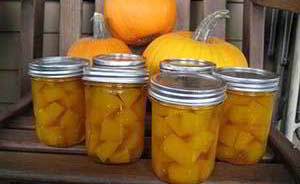 On the other hand, cubed pumpkin is fine to can. So why is there a difference? In simple terms, it’s a question of how the texture of the pumpkin is changed and how that density conducts heat. Domestic canners can’t penetrate the dense substance sufficiently to render it safe to eat.
On the other hand, cubed pumpkin is fine to can. So why is there a difference? In simple terms, it’s a question of how the texture of the pumpkin is changed and how that density conducts heat. Domestic canners can’t penetrate the dense substance sufficiently to render it safe to eat.
Related: 7 Deadly Canning Mistakes Even Smart People Make
 A Question of Density
A Question of Density
The issue of density also applies to other foods. Bananas, avocadoes, fatty meats including liver and pate are all on the list of foods to keep well away from your canner.
Even though the shelves in your local supermarket might groan with cream soups, tinned pasta, oats, biscuits and milk products; again, these types of food should be left to industrial canning processes as they cannot be replicated safely at home.
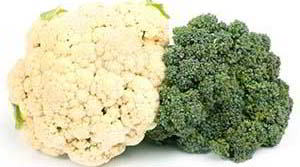 Additionally, some vegetables, such as broccoli and cauliflower are unsuited to the high temperatures needed to can safely and will end up as little more than a slurry.
Additionally, some vegetables, such as broccoli and cauliflower are unsuited to the high temperatures needed to can safely and will end up as little more than a slurry.
Canned Recipe Foods
Recipe foods – even simple ones such as pesto or peanut butter – are fabulously easy to make and enjoy fresh, but unsuitable for home canning. But what if you have a favorite recipe that you think would be fantastic canned, and know that individually; all of the ingredients are ‘safe-to-can’ ones?
Without access to a professional testing laboratory and monitoring test batches to establish safe cooking times and temperatures for an amalgam product with increased density and viscosity, it’s running a risk that you don’t need to take.
Dairy Danger
The other main food type to avoid is dairy. That to-die-for salted caramel sauce might end up having just that effect (or at least feel like it!) if you try canning it. In fact a recipe like this would have the double risk of butter or cream going rancid, and the viscous density of the food being resistant to thorough and even processing.
Alternative
The good news is that nearly everything can be preserved somehow. Vegetables and eggs can be pickled. Pumpkin puree can be made into leathers. Even butter can be preserved in a butter bell for up to one month.
Is Grandma’s Way Always Best?
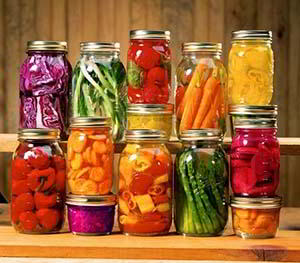 What can be canned and what can’t is often a divisive subject. Everyone has their own tried-and-trusted methods and there are always stories of how things have been done for generations and no one ever got sick. But things change. Pesticides and herbicides are used much more; the soil quality can be compromised by contaminants that can tweak the natural acidity of produce, and better testing and commercial canning methods have highlighted the risks – big and small – of getting it wrong.
What can be canned and what can’t is often a divisive subject. Everyone has their own tried-and-trusted methods and there are always stories of how things have been done for generations and no one ever got sick. But things change. Pesticides and herbicides are used much more; the soil quality can be compromised by contaminants that can tweak the natural acidity of produce, and better testing and commercial canning methods have highlighted the risks – big and small – of getting it wrong.
As with many things, there’s a place for all kinds of knowledge. A combination of inherited wisdom, up to date advice and a healthy dose of common sense is frequently a great recipe for success!
You may also like:
 How to Can Water for Emergencies
How to Can Water for Emergencies
The Real Reason Why Walmart’s are Closing all Over America (Video)
13 Myths and Facts About Canned Foods
What Should You Do With Your Canned Foods After the Expiration Date?

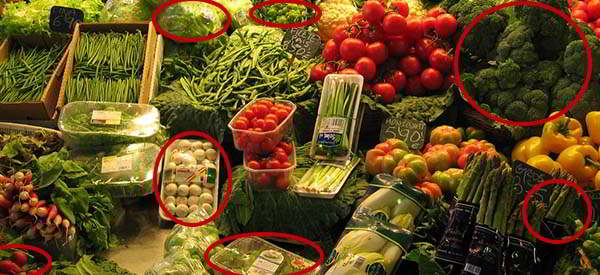
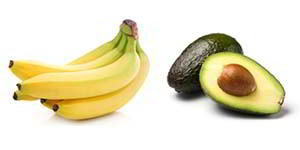 A Question of Density
A Question of Density









Cauliflower can be pickled and canned. By itself or in common recipes like giardinieria.
You can always dehydrate and then can. That’s what I do.
Milk, butter and cheese are quite cannable. Many many have done it for many many years with no problem. Go look at the stats-you will never find these items there if they were properly canned.
Buy Jackie Clay’s Growing and Canning Your Own Food for a good source of info.
Most of these ‘prepper’ articles are writen by people who have never precticed what they write about. As a farm wife.
I agree with some of what you say. I also have lived on a farm all my life and we do things different and have short cuts handed down from generation to generation. Some of our meat of the hoof doesn’t need to be canned yet.
I just learned from a Japanese program that tofu can be dried. They didn’t go into detail but my wife knows how to do it. That’s my next project. I’ll write a report on it when I have attempted it.
Good info. I’ve been canning for over 50 years and still follow the approved canning methods found in Ball’s Blue Book and other tested kitchen receipes. Figure it is best to be safe. I have observed the effects of food poisoning and that is certainly not something I want my family to experience!